| INTRO |
 |
Introduction and objectives of the meeting |
M.J.Goupil |
 |
| SESION I |
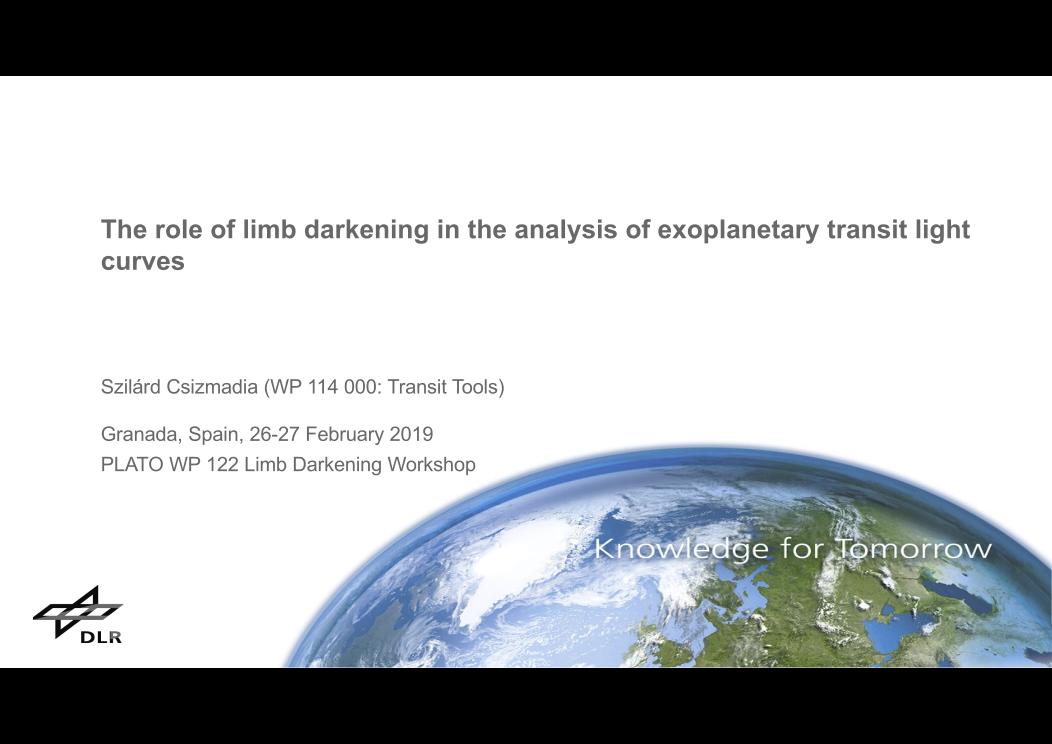 |
The role of limb darkening in the analysis of exoplanetary transit light curves
One of the primary goals of the future PLATO-mission is to determine the radius of the exoplanets with 3% accuracy, which requires determining from the photometry the planet-to-star radius ratio with 2% uncertainty.
Several effects impact on the precision of the radius ratio measurement: instrumental noise, stellar activity, contamination, and limb darkening. Stellar activity has a direct impact on the precision via affecting the baseline determination and an indirect impact via modifying the limb darkening coefficients.
In this talk I summarize:
(1) The important impact of limb darkening on PLATO's primary goals.
(2) The required accuracy in the knowledge of limb darkening profiles.
(3) A short overview of recent developments in the understanding and characterization of limb darkening and possible future improvements.
(4) the importance of stellar activity in limb darkening calculations.
|
S. Csizmadia |
 |
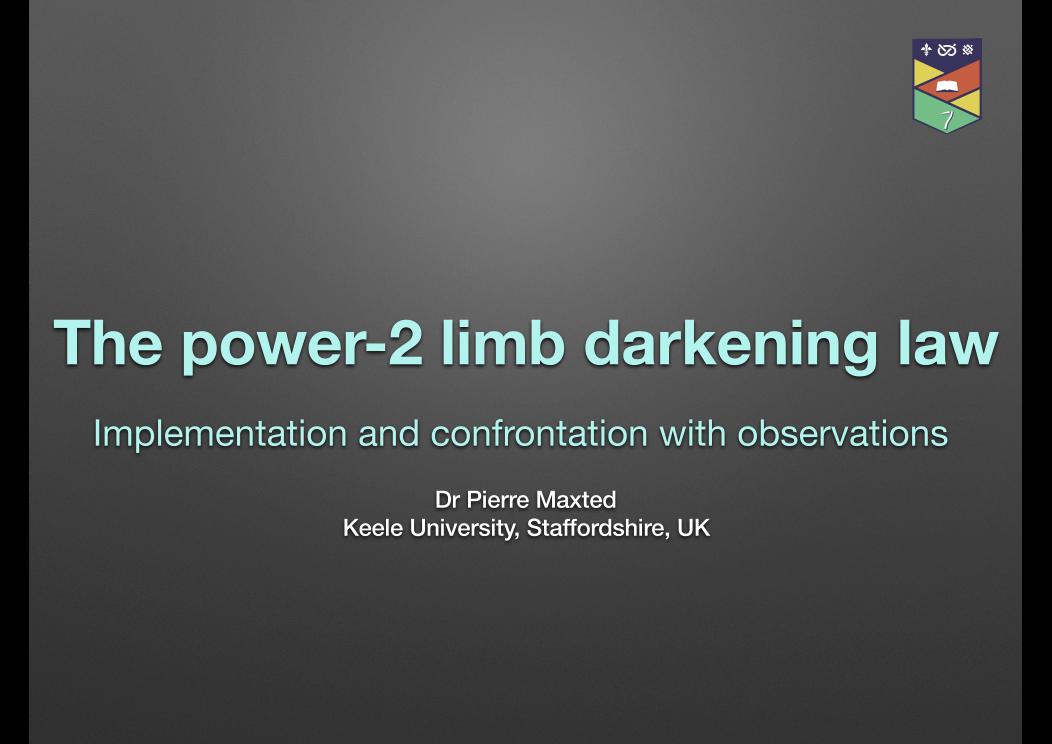 |
The power-2 limb darkening law - implementation and confrontation with observations
The power-2 limb-darkening law does a good job of matching the limb darkening profile from model atmospheres for solar-type stars using only two parameters. I will present the results of comparing the parameters of the power-2 limb-darkening law from the STAGGER-grid to empirical values determined from the Kepler light curves of transiting exoplanets. I will also describe an very fast method to calculate light curves for the power-2 limb darkening law. Finally, I will discuss briefly the effect of magnetic fields on the limb-darkening profile and whether this is an observable effect.
|
P. Maxted |
 |
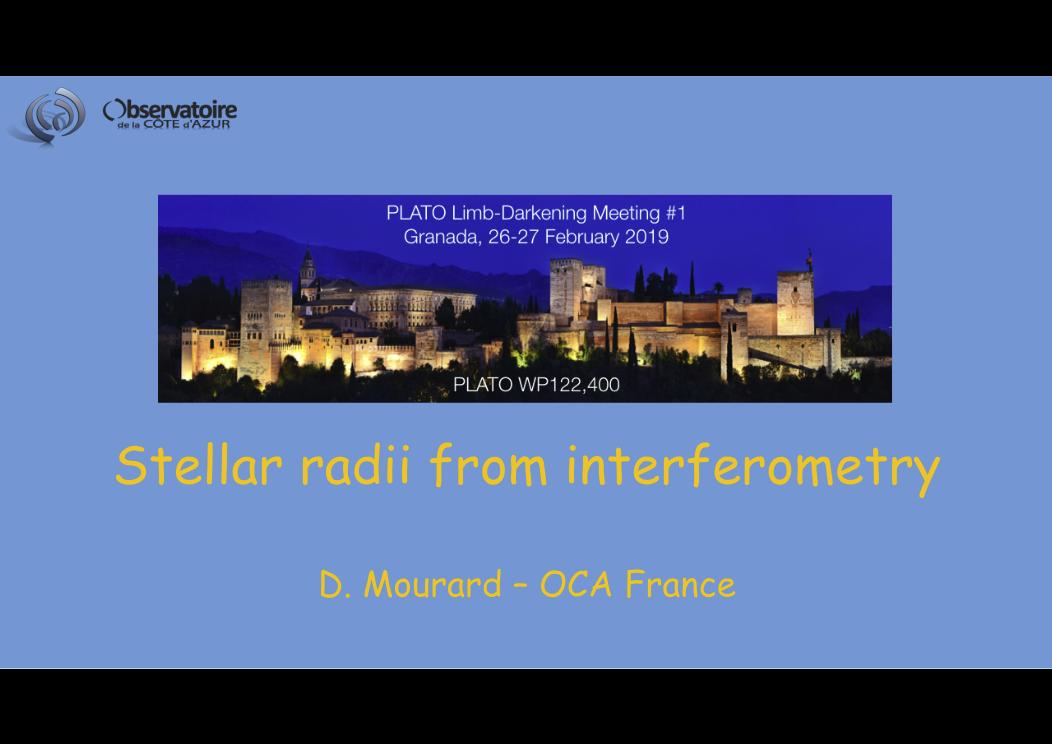 |
Stellar radii from interferometry
presentation on "Stellar radii from interferometry", speaking about angular diameter measurements, limb darkening measurements and estimations.
|
D. Mourard |
 |
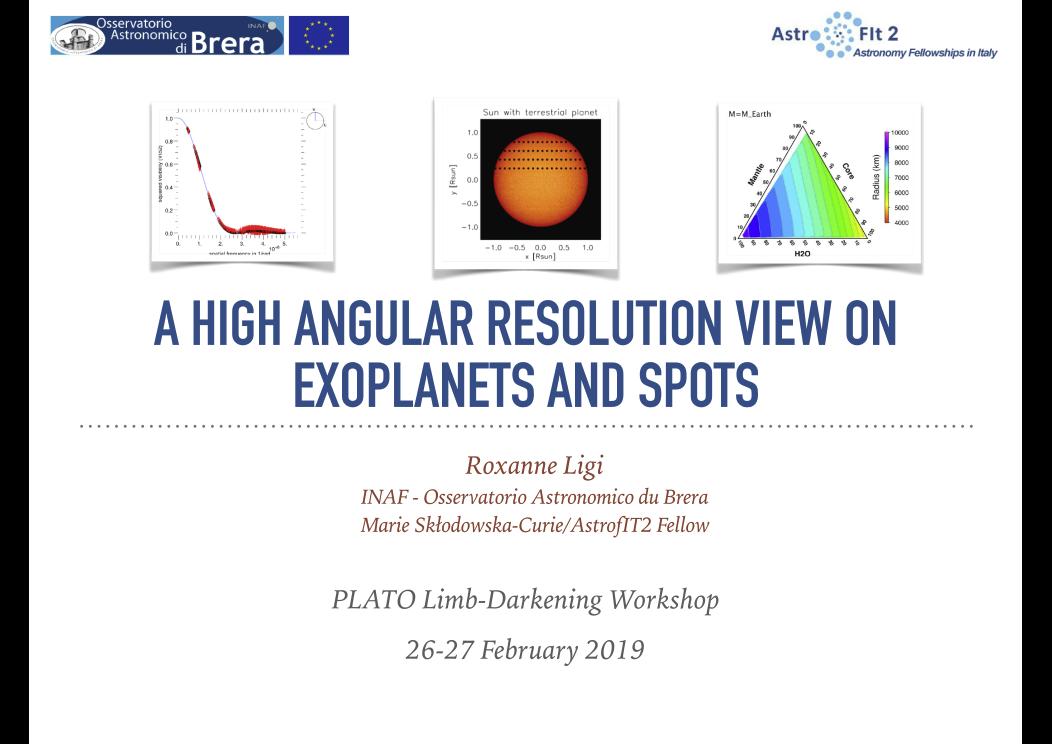 |
A high angular resolution point of view on exoplanets and spots
Stellar activity, and specifically magnetic spots and granulation patterns, are known to perturb the determination of stellar parameters and the detection of exoplanets. In particular, activity can bias the direct measurement of angular diameters using interferometry.
Can we quantify this bias? If the spotted star hosts a transiting exoplanet, what is the impact on the determination of its parameters? Through recent results from observations and models, I will show that the signature of activity can be significant on the stellar parameters determination, but that the future should bring some insights to solve this difficult problem.
|
R. Ligi |
 |
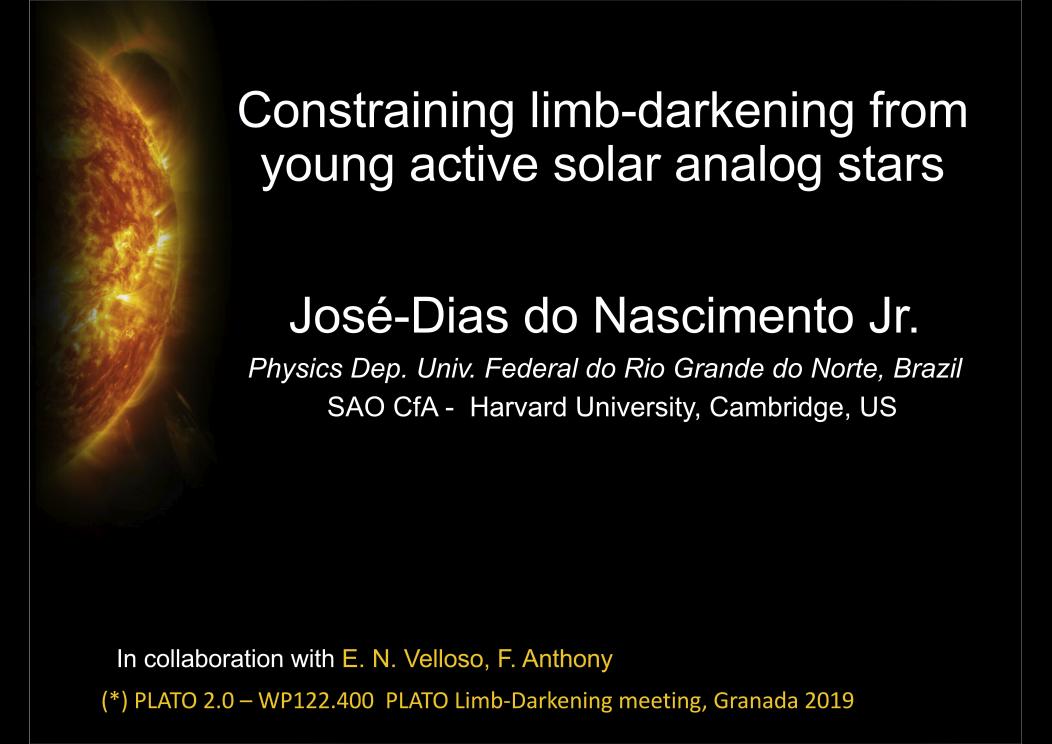 |
Constraining limb darkening from young active solar analog stars
Light curve modulations of cool stars are the result of spots crossing the visible stellar disc. Due to differential rotation, spots at different latitudes have different rotation periods. In order to accurately model a star’s rotation profile, it is necessary to consider the effects of limb-darkening on the stellar surface. Constrain parameters of limb-darkening and differential rotation using spot modelling. We use the macula starspot model together with MultiNest sampling algorithm to sample the posterior probability distribution of the parameter space. We are able to reproduce the known results for κ1 Ceti, a young solar analog observed by MOST, and we extend the method to active solar analog stars in the intermediate-age open cluster NGC 6811. We choose time windows from the 4 year long Kepler light curves in order to reduce the computational complexity. This method could be useful for identifying trends in differential rotation and limb-darkening as a function of mass and age for solar-type dwarfs observed by PLATO.
|
J. D. Do
Nascimento |
 |
| SESSION II |
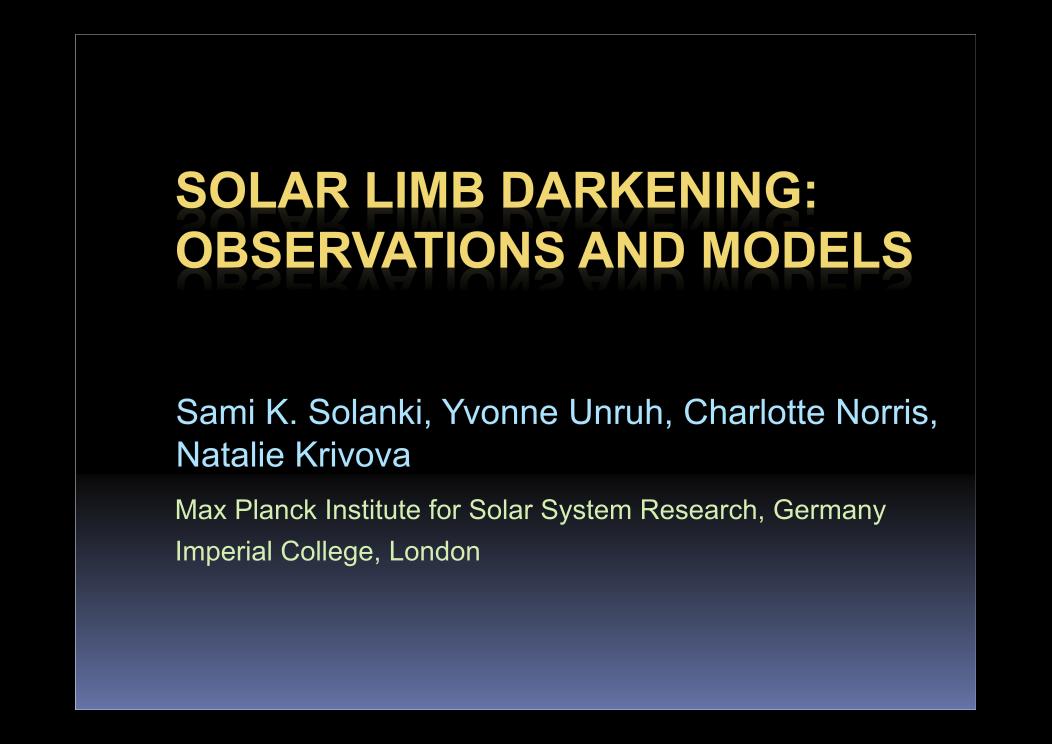 |
Solar limb darkening: observations and models |
S. Solanki |
 |
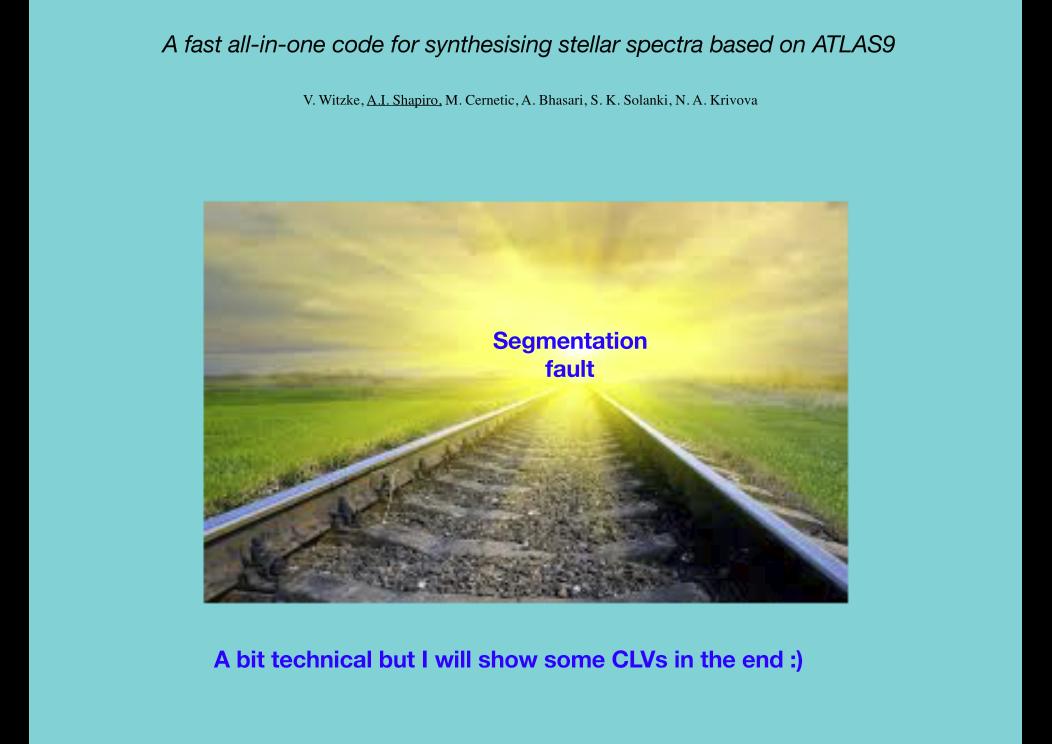 |
A fast all-in-one code for synthesising stellar spectra based on ATLAS9
The recent focus on stellar observations and exoplanet detections leads to an immense increase in available accurate photometric measurements. In order to analyse and interpret the collected data, comprehensive and fast spectral synthesis in broad spectral intervals is essential. For this purpose we chose to build on the ATLAS9 and DFSYNTHE codes. They include all crucial physics for main-sequence stars while keeping the setup simple. The aim is to develop an all-in-one tool that is accurate, fast and flexible for simulating stellar spectra and their center-to-limb variations with various fundamental stellar parameters and with different spectral resolutions. Furthermore, a fast treatment for pass-band filters such as the PLATO, Kepler, or Tess filter, will be included. To achieve this goal we merged the DFSYNTHE code, which calculates high-resolution opacities used to generate opacity distribution functions (ODFs), with the ATLAS9 code that can calculate both the atmospheric structures as well as the emergent spectra. The so obtained tool was further parallelised to speed up the high resolution opacity calculations. Furthermore, we included a more flexible treatment of the ODFs: The frequency resolution can be chosen, a spectral filter included, and the line-lists exchanged. We will include the most updated VALD linelist.
Thus this code can be used to analyse observed stars, as it allows very fast spectral synthesis for any main-sequence star. Furthermore, we will use it for a new generation of models based on realistic three-dimensional radiation magnetohydrodynamic simulations of atmospheres. Such models can be used to investigate realistic contrast for magnetic features on different stars by calculating emergent spectra from three dimensional (3D) cubes of near-surface magneto convection.
|
A. Shapiro |
 |
| SESSION III |
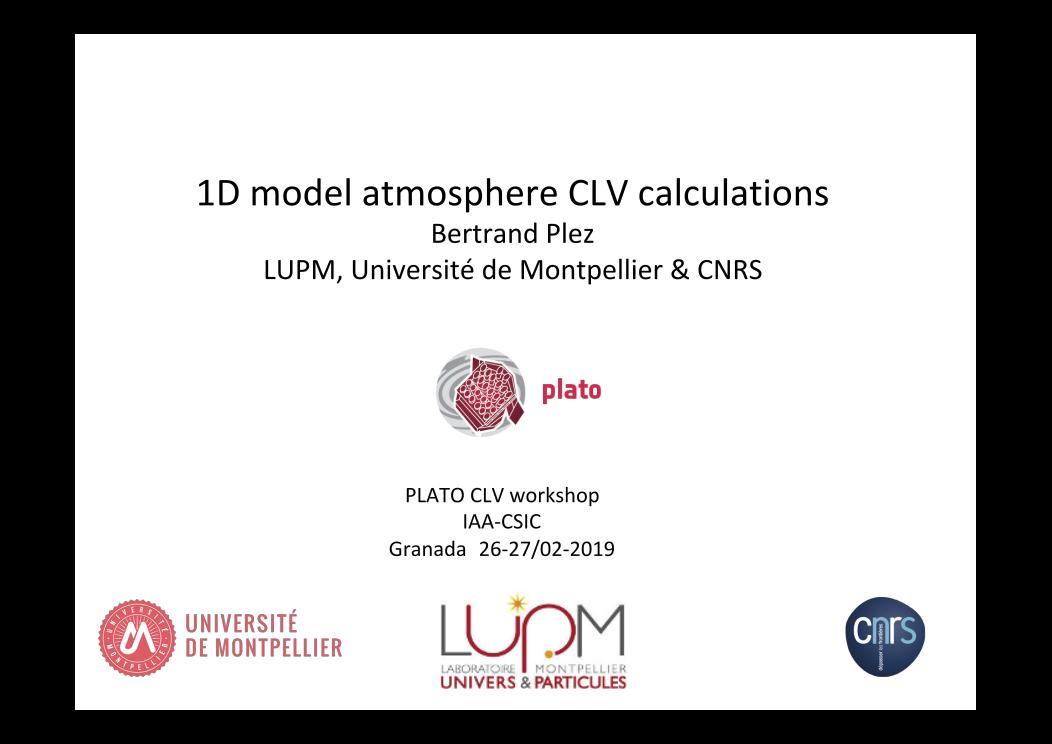 |
Center-to-limb variation calculations based on 1D model atmospheres
Present CLV computations with the MARCS/Turbospectrum suite. Discuss preliminary comparisons with solar observations.
|
B. Plez |
 |
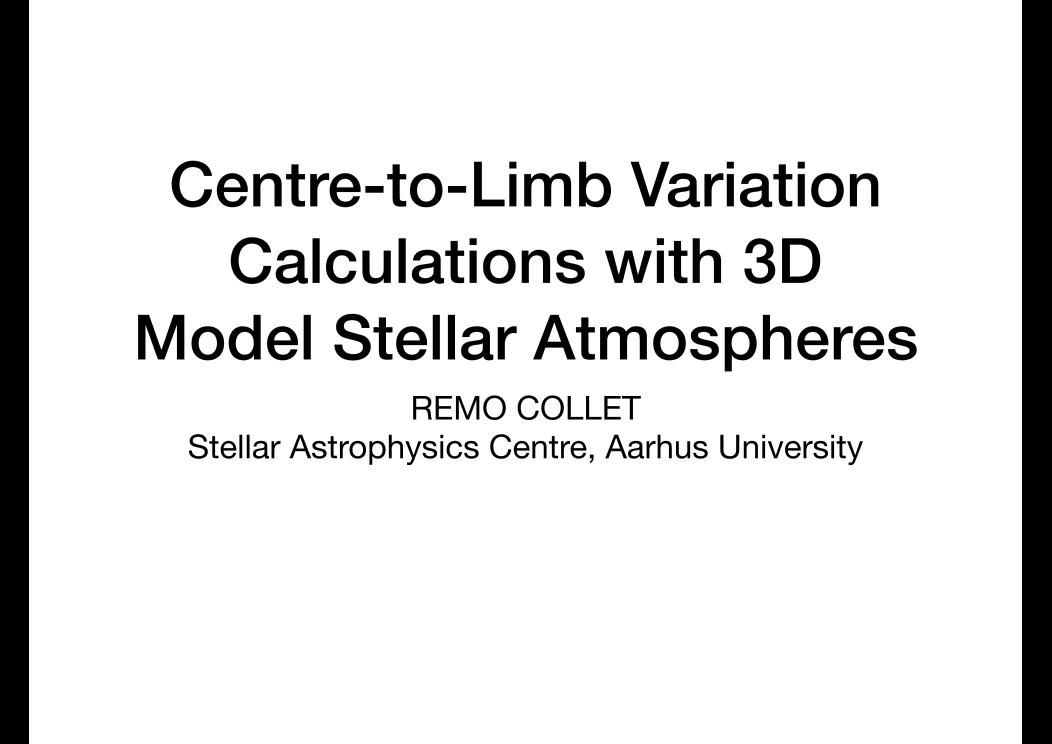 |
Center-to-limb variation calculations based on 3D model atmospheres
In this talk, I will review recent results in the field of three-dimensional (3D) simulations of surface convection in solar- and late-type stars. I will focus on the application of such simulations as time-dependent 3D model stellar atmospheres in calculations of synthetic spectra, centre-to-limb variations, and interferometric observables. I will illustrate the differences between the predictions of 3D and 1D models and the impact of limb darkening calculations with 3D models on the interpretation of interferometric and exoplanet transit observations.
|
R. Collet |
 |
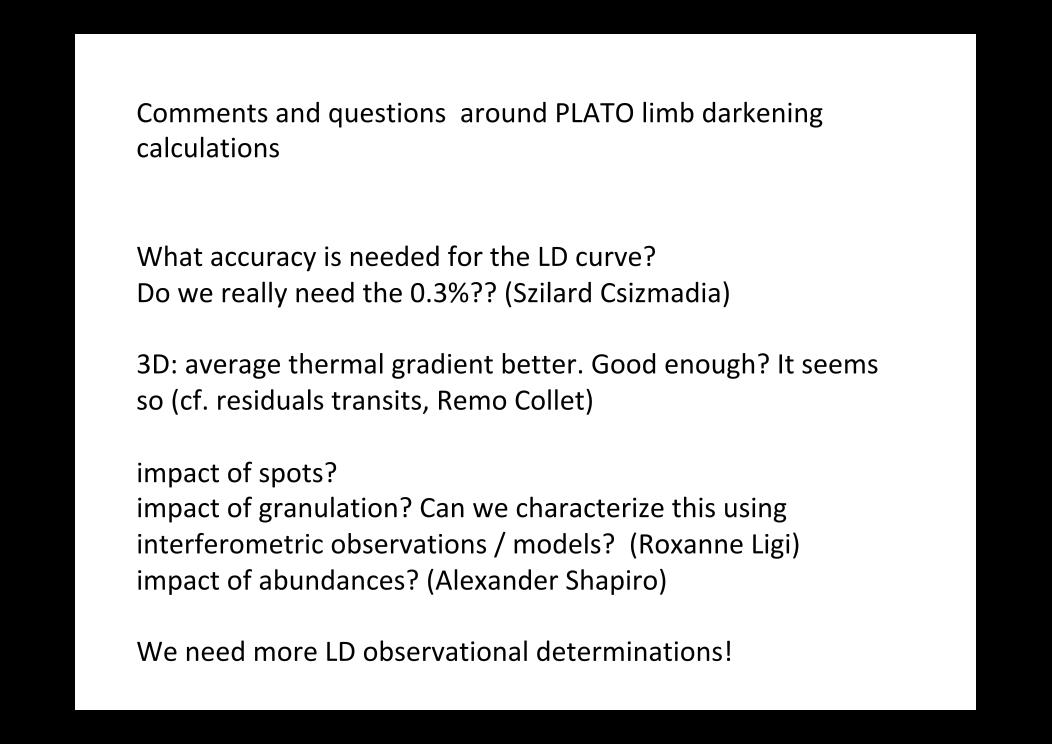 |
Discussion |
B. Plez |
 |
| SESION IV |
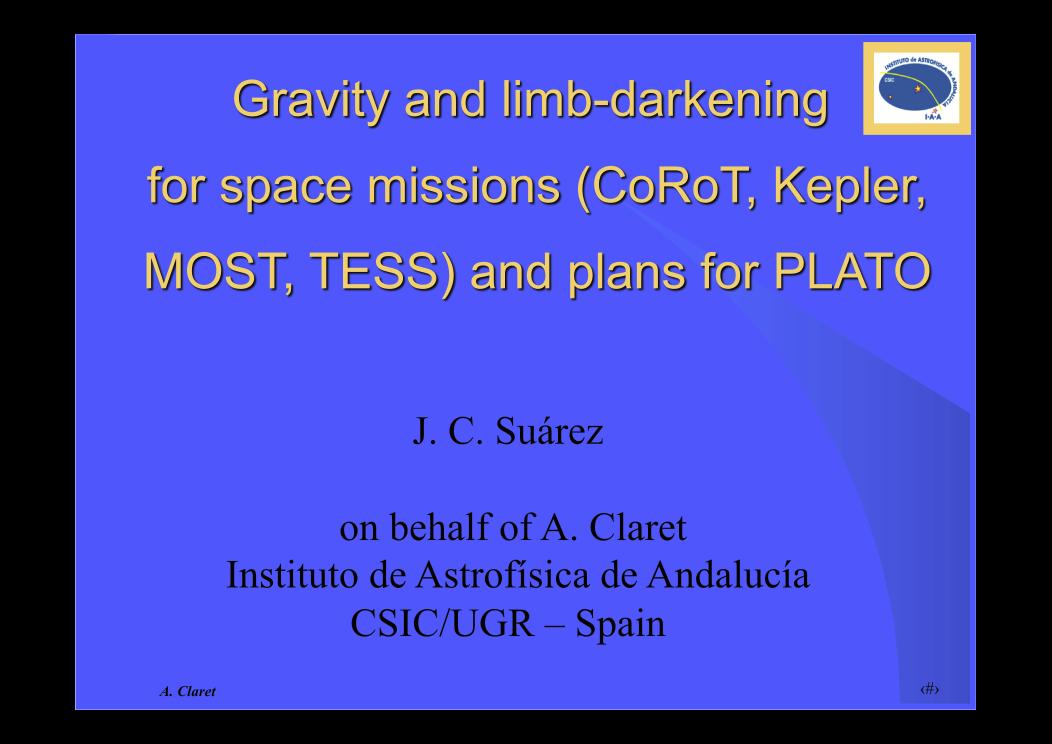 |
Gravity and limb-darkening for space missions (CoRoT, Kepler, MOST, TESS) and plans for PLATO |
J.C. Suarez |
 |
 |
Discussion |
T. Morel |
 |
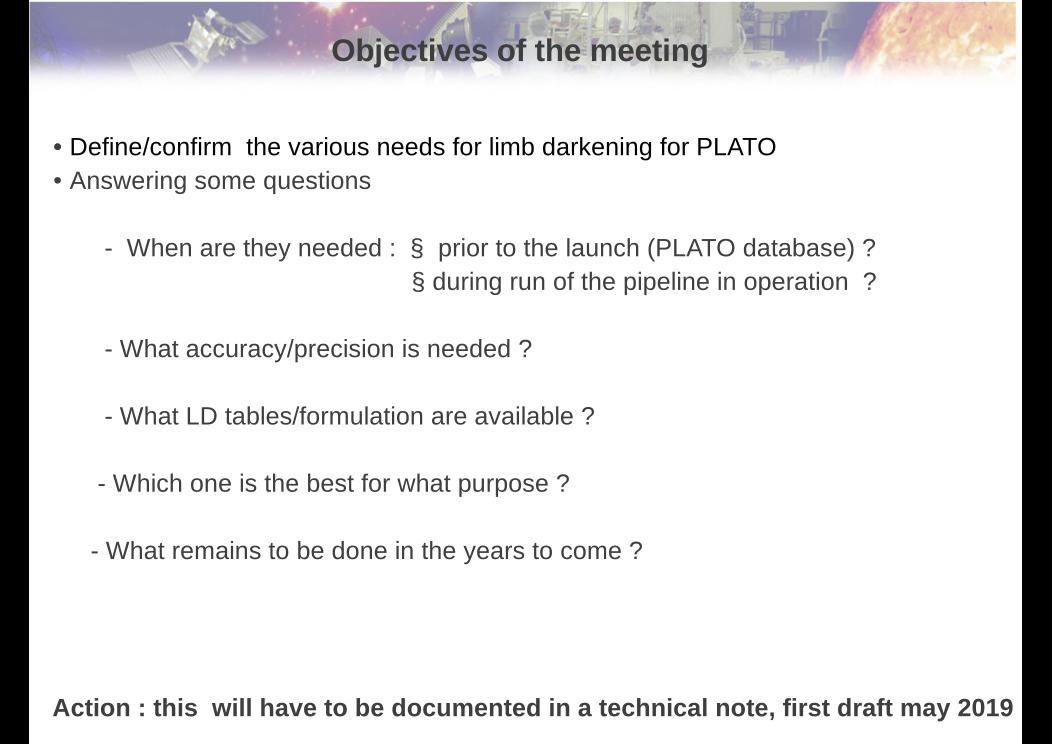 |
Wrap-up discussion |
M.J.Goupil |
 |
| SOCIAL |
 |
Social |
M.-J. Goupil |
 |